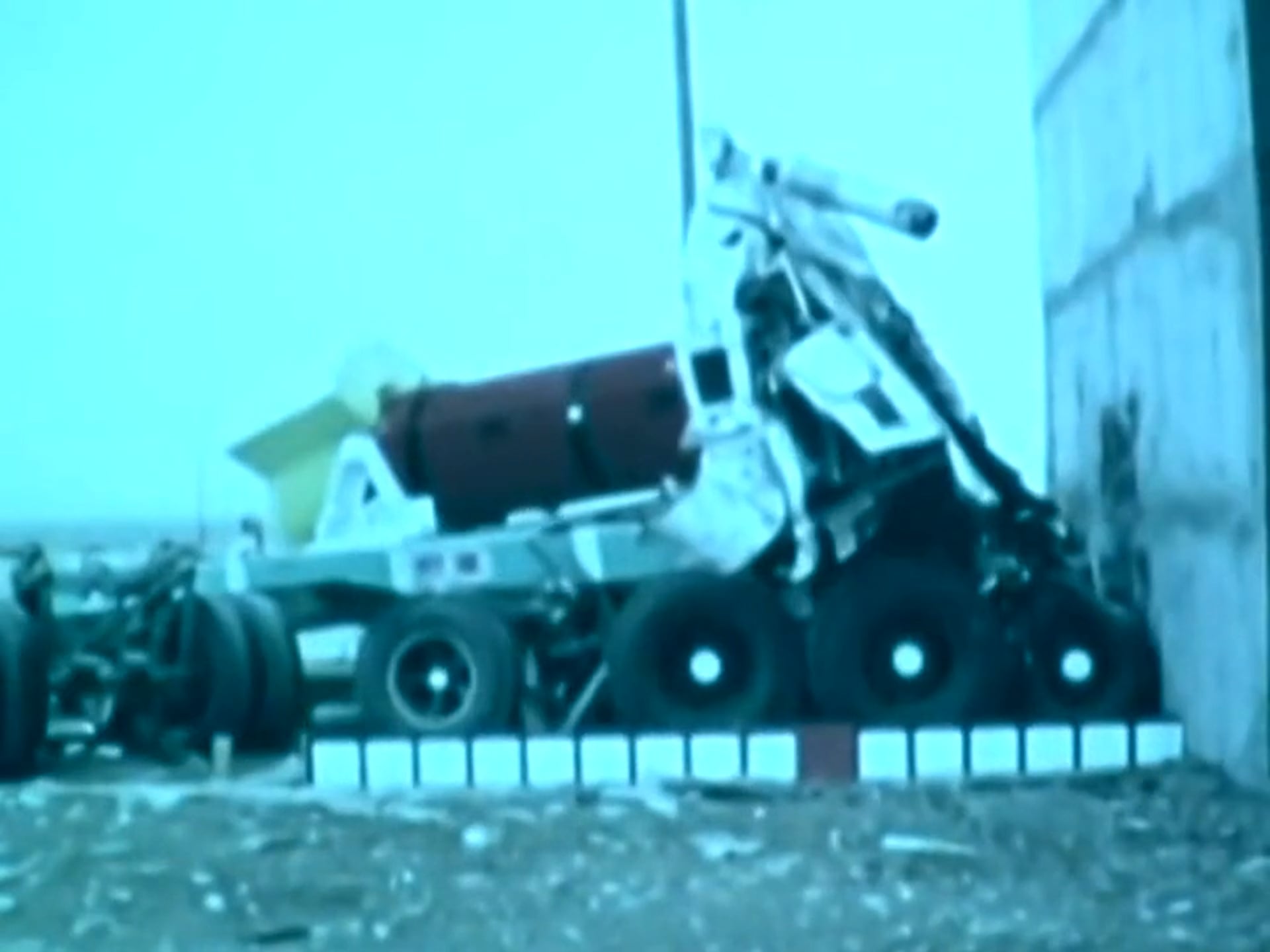84 mph Truck Crash into 690 Ton Concrete Block: Nuclear Waste Cask Crash Tests 1978 DOE Sandia
iSpeech
Support this channel: https://paypal.me/jeffquitney OR https://www.patreon.com/jeffquitney
more at http://quickfound.net/
Originally a public domain film, slightly cropped to remove uneven edges, with the aspect ratio corrected, and one-pass brightness-contrast-color correction & mild video noise reduction applied.
The soundtrack was also processed with volume normalization, noise reduction, clipping reduction, and/or equalization (the resulting sound, though not perfect, is far less noisy than the original).
http://large.stanford.edu/courses/2017/ph241/watson2/docs/sand2014-17831r.pdf
FULL-SCALE TRANSPORT ACCIDENT TESTING IN SUPPORT OF A
SPENT NUCLEAR FUEL TRANSPORTATION CAMPAIGN
The safe transport of spent nuclear fuel and high-level radioactive waste is an important aspect of the waste management system of the United States. The Nuclear Regulatory Commission (NRC) currently certifies spent nuclear fuel rail cask designs based primarily on numerical modeling of hypothetical accident conditions augmented with some small scale testing. However, NRC initiated a Package Performance Study (PPS) in 2001 to examine the response of full-scale rail casks in extreme transportation accidents. The objectives of PPS were to demonstrate the safety of transportation casks and to provide high-fidelity data for validating the modeling. Although work on the PPS eventually stopped, the Blue Ribbon Commission on America’s Nuclear Future recommended in 2012 that the test plans be re-examined. This recommendation was in recognition of substantial public feedback calling for a full-scale severe accident test of a rail cask to verify evaluations by NRC, which find that risk from the transport of spent fuel in certified casks is extremely low. This report, which serves as the re-assessment, provides a summary of the history of the PPS planning, identifies the objectives and technical issues that drove the scope of the PPS, and presents a possible path for moving forward in planning to conduct a full-scale cask test. Because full-scale testing is expensive, the value of such testing on public perceptions and public acceptance is important. Consequently, the path forward starts with a public perception component followed by two additional components: accident simulation and first responder training. The proposed path forward presents a series of study options with several points where the package performance study could be redirected if warranted...
3.3.1.2 Package Performance Study
In the PPS study, the NRC suggested extra-regulatory, full-scale tests to address this concern (NRC 2003). Given that the majority of spent nuclear fuel in dry storage is currently loaded in dual purpose canisters capable of transport only by rail and given the prevalence of welded canister designs over bolted basket designs the test should be on welded canister, rail-transport system. Other guidance for the extra-regulatory tests included
(a) use of a currently certified cask
(b) severe mechanical and thermal loading conditions, but no test to failure; and (c)
demonstration of cask integrity through leak-tightness of the closure system and evidence of no breach in the containment boundary.
Specific test conditions suggested were
Impact test of a rail cask with impact limiters into an unyielding target at 96 to 144 km/h
(60 to 90 mph). The orientation was unspecified.
“Back breaker” impact test of a truck cask onto a rigid semi-cylinder. The back breaker
test is a configuration in which the impact limiters are by-passed and the full impact of
the test is on the cask itself.
Fully engulfing, optically dense fire tests of both cask designs for a duration beyond the
30 minute criterion specified in 10 CFR 71.73 (U.S. 2014)...
https://en.wikipedia.org/wiki/Spent_nuclear_fuel
Wikipedia license: http://creativecommons.org/licenses/by-sa/3.0/
Spent nuclear fuel, occasionally called used nuclear fuel, is nuclear fuel that has been irradiated in a nuclear reactor (usually at a nuclear power plant). It is no longer useful in sustaining a nuclear reaction in an ordinary thermal reactor and depending on its point along the nuclear fuel cycle, it may have considerably different isotopic constituents...
source








Gloss